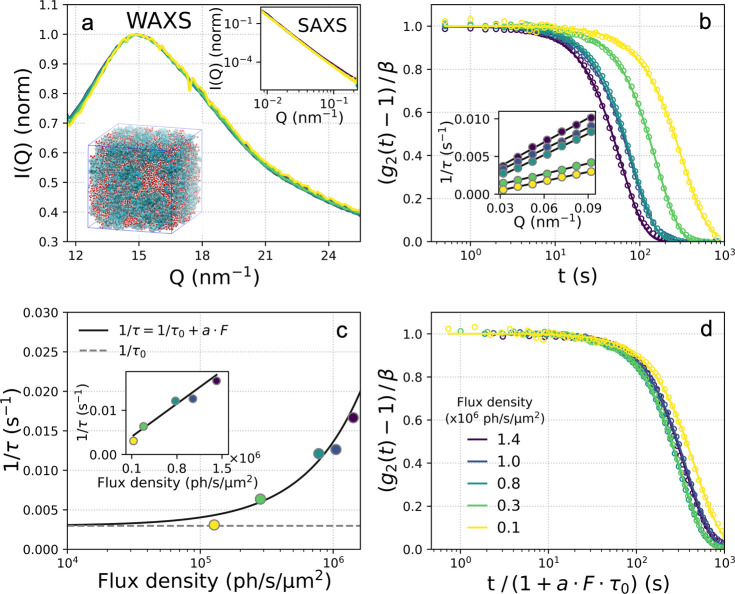Figure 1.
(a) Wide- and small-angle X-ray scattering (WAXS and inset SAXS) intensity as a function of momentum transfer Q for different flux densities at room temperature (T = 300 K). The schematic depicts the hydrated protein matrix.38 (b) Intensity autocorrelation functions g2 at momentum transfer Q = 0.08 nm–1 for different flux densities (in units of photons/second/area). The inset shows the linear dependence of the decay rate 1/τ extracted from the fit of the g2 functions as a function of the momentum transfer Q. (c) The decay rate 1/τ extracted from the fit of the g2 functions (solid lines) for variable flux density at Q = 0.08 nm–1. The inset shows the same data on a linear scale. (d) The renormalized intensity autocorrelation functions g2 at momentum transfer Q = 0.08 nm–1 for variable flux density, as indicated in the legend. The time axis is normalized to the corresponding flux density F by calculating t/(1 + a·F·τ0), where τ0 is the equilibrium time constant extracted by extrapolation to F = 0.

